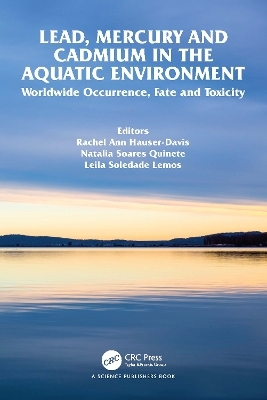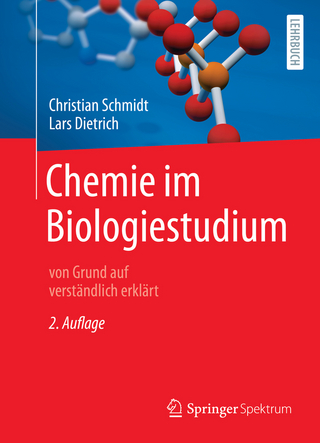
Lead, Mercury and Cadmium in the Aquatic Environment
CRC Press (Verlag)
978-1-032-03054-8 (ISBN)
This book presents an integrated and holistic discussion on cadmium, lead and mercury toxicity in aquatic environments, expanding general concepts on chemical speciation effects and exploring specific environmental toxicological issues, exposure routes, and bioanalytical approaches for their determination and assessments on their intracellular deleterious effects. It contains worldwide and regional aspects on cadmium, lead and mercury occurrence, fate, and toxicity, addressing key environmental exposure and health risk concerns to both humans and aquatic organisms. Our book is of interest to anyone conducting research in the broad fields of oceanography, geochemistry, ecotoxicology, and environmental and public health.
Rachel Ann Hauser-Davis has a BSc degree in Biological Sciences and an MSc degree and PhD degree in Sciences - Analytical Chemistry from the Pontifical Catholic University of Rio de Janeiro, all in Brazil. She is currently a researcher at the Oswaldo Cruz Foundation (Fiocruz), in Rio de Janeiro, Brazil. Her primary research interests include Biological Oceanography, Ecotoxicology, Environmental Chemistry and Science Education. Natalia Soares Quinete has a BSc in Chemical Engineering, an MSc degree in Analytical Chemistry and a PhD degree in Environmental Analytical Chemistry. She is currently an Assistant Professor at Florida International University. Her research focuses on assessing and understanding the sources, distribution, and fate of persistent pollutants and emerging contaminants in different environmental and biological compartments and potential impacts to humans and animals. Leila Soledade Lemos has a BSc in Biological Sciences, an MBA in Environmental Planning and Management, an MSc degree in Public Health and Environment and a PhD in Wildlife Science. She is currently a Postdoctoral Associate at Florida International University. Leila’s research interest focuses on how marine fauna respond to anthropogenic activities and natural shifts, and possible effects on individual distribution and health to aid in population management and conservation efforts.
Subcellular Cadmium, Lead and Mercury Partitioning Assessments in Aquatic Organisms as a Tool for Assessing Actual Toxicity and Trophic Transfer. Assessment of Lead, Cadmium and Mercury in Coastal Aquatic Environments in South Florida and Abroad: Identification of Anthropogenic and Natural Sources in Surface Waters. Reviewing Cd, Hg and Pb Assessments and Effects in Elasmobranchs. Cadmium, Lead and Mercury in Crustacea: Environmental and Risk Assessments. Accumulation of Lead, Mercury and Cadmium in Coastal Sediments in the Eastern Mediterranean Sea. Cadmium, Mercury and Lead in the Bones of Marine Mammals. Physicochemical Water Parameters Affecting Cadmium, Lead and Mercury Speciation, Bioavailability and Toxicity in the Aquatic Environment. Uptake, Bioaccumulation, Partitioning of Lead (Pb) and Cadmium (Cd) in Aquatic Organisms in Contaminated Environments. Cadmium in Mexican Sharks: Presence, Accumulation, and Public Health Risks. A Review on Cadmium, Mercury, and Lead Loads in Pontoporia blainvillei, the Most Endangered Dolphin Species from the Southwest Atlantic.
| Erscheinungsdatum | 13.09.2024 |
|---|---|
| Zusatzinfo | 30 Tables, black and white; 8 Illustrations, color; 16 Illustrations, black and white |
| Verlagsort | London |
| Sprache | englisch |
| Maße | 156 x 234 mm |
| Gewicht | 462 g |
| Themenwelt | Naturwissenschaften ► Biologie ► Biochemie |
| Naturwissenschaften ► Biologie ► Limnologie / Meeresbiologie | |
| Technik ► Bauwesen | |
| Weitere Fachgebiete ► Land- / Forstwirtschaft / Fischerei | |
| ISBN-10 | 1-032-03054-2 / 1032030542 |
| ISBN-13 | 978-1-032-03054-8 / 9781032030548 |
| Zustand | Neuware |
| Informationen gemäß Produktsicherheitsverordnung (GPSR) | |
| Haben Sie eine Frage zum Produkt? |
aus dem Bereich


